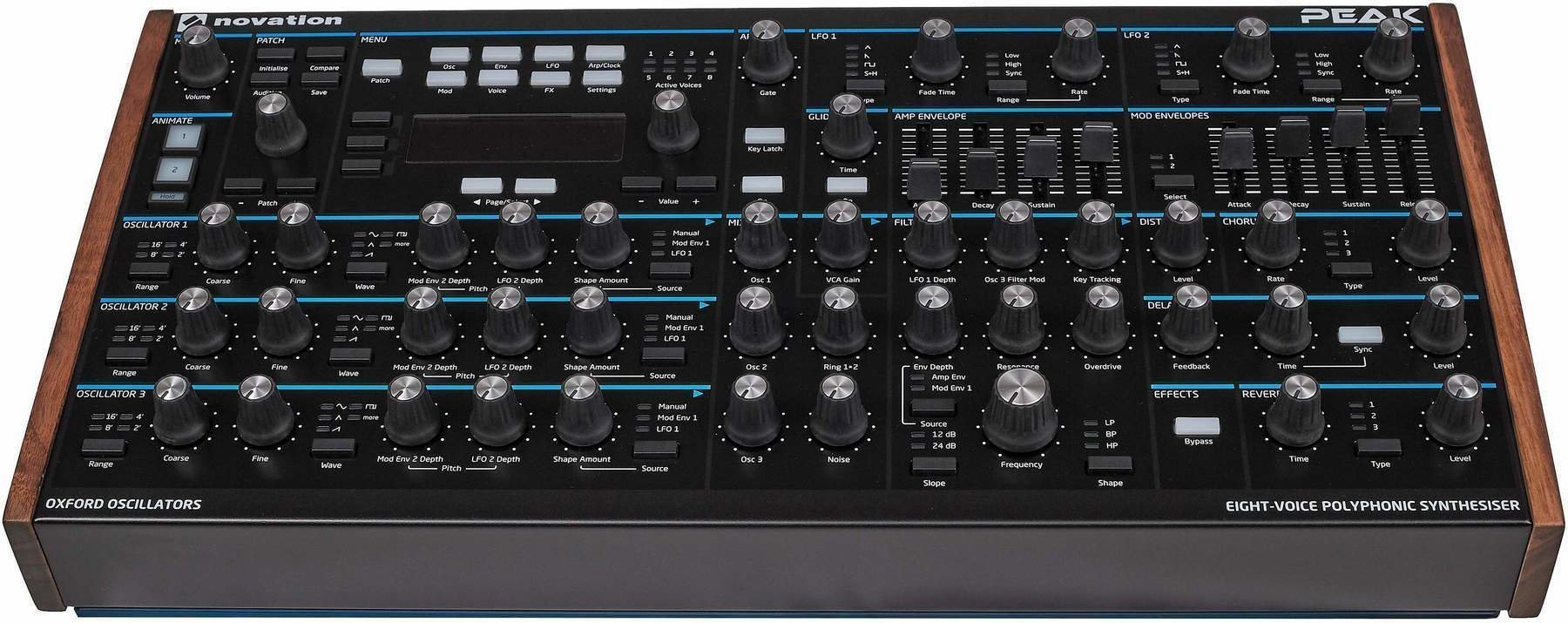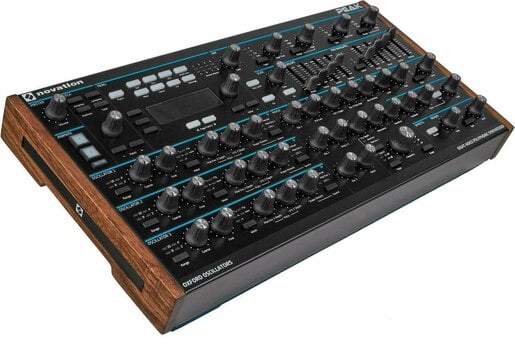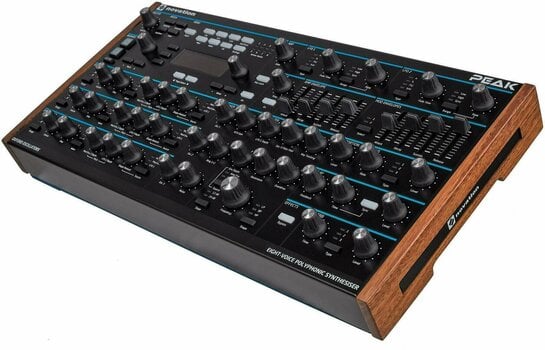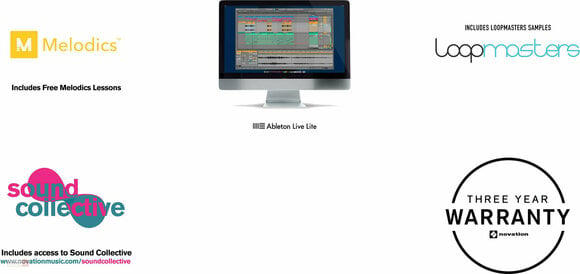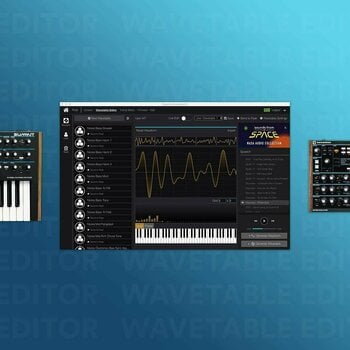Choose country for shipment delivery
-
All categories
19
All categories
-
Guitars
 Guitars
Guitars- View all
- Electric Guitars
- Acoustical Guitars
- Classical Guitars
- Electro-Acoustic Guitars
- Guitars for Children
- Guitars for Beginners
- Electric Guitars for Beginners
- Lefthanded Guitars
- Ukuleles
- Bluegrass Instruments
- Guitar Combos
- Guitar Amplifiers
- Guitar Cabinets
- Guitar Effects
- Guitars Strings
- Guitar Cases and Bags
- Tuners
- Guitar Pickups
- Spareparts for Guitars
- Guitar Straps
- Guitar Accessories
-
Basses

-
Keys

-
Drums

-
Microphones
 Microphones
Microphones- View all
- Dynamic Microphones
- Condenser Microphones
- USB Microphones
- Podcast microphones
- Retro Microphones
- Ribbon Microphones
- Small diaphragm condenser microphones
- Drum Microphones
- Microphone Sets for Drums
- Conference microphones
- Microphones for reporters
- Video microphones
- PC Microphones
- Measurement Microphones
- Installations microphones
- Boundary microphones
- Stereo Microphones
- Microphone Accessories
-
Studio

-
PA

-
Lighting
 Lighting
Lighting- View all
- Lighting Sets
- Moving Heads
- PAR Lights
- Lighting Effects
- Effect Machines and Accessories
- Lasers
- LED Bars
- LED Panels
- Stroboscope
- Blinders
- UV Technics
- Theatre Lights
- Decorational Lighting
- Studio Lights
- Lighting Controllers and Dimmers
- Lighting Stands
- Lighting Gear Cases and Bags
- Lighting Cables
- Light Sources
- Lighting accessories
- Ring lights
-
DJ

-
Accessories

-
Traditional
 Traditional
Traditional -
Strings
 Strings
Strings- View all
- Violins
- Violas
- Cellos
- Double Basses
- Electric Violins
- Electric Violas
- Electric Cellos
- Electric Double Basses
- Accessories for Violins
- Accessories for Violas
- Accessories for Cellos
- Accessories for Double Bass
- Bow bags and cases
- String instrument Pickups
- Fine tuning
- Spare parts and other accessories
-
Winds
 Winds
Winds- View all
- Recorders
- Transverse Flutes
- Saxophones
- Trumpets, Cornets and Flugelhorns
- Clarinets
- Trombones
- Tubas and Sousaphones
- Euphonia
- Horns
- Bassoons
- Oboes
- Tenor and Baritone Horns
- Hunting Horns
- Wind Synthesizers
- Other Wind Instruments
- Mouth Harmonicas
- Effect Whistles
- Cultural whistles
- Pan Flutes
- Ocarinas
- Kazoos
- Accessories for Wind Instruments
-
Photo & Video

-
Hi-Fi

-
Turntables

-
Headphones
 Headphones
Headphones- View all
- Headphones - all types
- Wireless & Bluetooth headphones
- On-ear Headphones
- In-ear Headphones
- Ear Loop headphones
- Headphones with microphone
- Noise-cancelling headphones
- Bone Conduction Headphones
- PC Gaming Headsets
- Headphones for children
- Headphones for hearing impaired
- Office Headsets
- Hearing Protection
- Headphone Accessories
-
Audio
 Audio
Audio -
Merch

-
-
Guitars
Guitars
- View all
-
Deals Guitars
-
Electric GuitarsElectric Guitars
- View all
- Deals Electric guitars
- Electric Guitars - All Shapes
- ST-Models
- T-Models
- Singlecut Models
- Super ST-Models
- Hard & Heavy
- Doublecut
- Semiacoustic Guitars
- Jaguar
- Jazzmaster
- Mustang
- Non-traditional shapes
- 7-string Guitars
- 8-string Guitars
- Headless Guitars
- Multiscale Guitars
- Modelling, MIDI and USB Guitars
-
Acoustical GuitarsAcoustical Guitars
-
Classical Guitars
-
Electro-Acoustic Guitars
-
Guitars for Children
-
Guitars for Beginners
-
Electric Guitars for Beginners
-
Lefthanded Guitars
-
Ukuleles
-
Bluegrass InstrumentsBluegrass Instruments
-
Guitar Combos
-
Guitar AmplifiersGuitar Amplifiers
- View all
- Modelling Amplifier
- Solid-State Guitar Amplifier Heads
- Tube Guitar Amplifier Heads
- Hybrid Guitar Amplifier Heads
- Guitar Preamps and Rackamps
- Guitar Headphone Amplifiers
- Foot switches and controllers
- Vacuum Tubes for Tube Amplifiers
- Dustcovers for Guitar Amplifiers
- Attenuators and Load Boxes
-
Guitar Cabinets
-
Guitar EffectsGuitar Effects
- View all
- Multieffects for Guitars
- Overdrives / Distortions / Fuzzes / Boosters
- Delays / Reverbs
- Loopers / Samplers
- Wah-Wah Pedals
- Choruses / Flangers / Phasers
- Harmonizer / Pitch Shifter / Octaver
- Compressors / Sustainers
- Guitar synthesizer
- Volume Pedals
- Noise Gates / Suppressors
- Tremolos / Vibratos
- Equalizers
- Miscellaneous Pedals
- Stomp/Drum Boxes
- Pedalboards and Bags for Effects
- Buffer Bay
- Effects for acoustic guitars
- Guitar Effects - All Types
- Guitar Effect Accessories
- Power Supplies for Effects
-
Guitars Strings
-
Guitar Cases and BagsGuitar Cases and Bags
-
Tuners
-
Guitar Pickups
-
Spareparts for Guitars
-
Guitar Straps
-
Guitar Accessories
-
Basses
Basses
- View all
-
Deals Bass guitars
-
Electric Basses
-
Acoustic Basses
-
Bass Heads
-
Bass Speaker Cabinets
-
Bass Combos
-
Bass Effects
-
Strings for Basses
-
Cases and Bags for BassesCases and Bags for Basses
-
Pickups for Basses
-
Spareparts for BassesSpareparts for Basses
-
Keys
Keys
- View all
-
Deals Keys
-
Digital PianosDigital Pianos
-
Digital Grand Pianos
-
Keyboards
-
Stage PianosStage Pianos
-
Synthesizers and WorkstationsSynthesizers and Workstations
-
MIDI Master Keyboards
-
MIDI Controllers
-
Pianos
-
Grand Pianos
-
Accordions
-
Melodicas
-
Electric OrgansElectric Organs
-
Keyboard Amps
-
Accessories for Keys
-
Drums
Drums
- View all
-
Deals Drums
-
Acoustic Drums
-
Electronic Drums
-
Drum Hardware
-
PercussionPercussion
- View all
- Congas
- Bongos
- Djembes
- Cajons
- Darbukas
- Kalimbas
- Handpans / Steel Tongue Drum
- Meditation and Music Therapy
- Tongue Drums
- Doumbeks
- Ibo Drums
- Samba Instruments
- Timbales
- Ritual Instruments
- Percussion for Children and Percussion Sets
- Xylophones, metallophones and carillons
- Hand Drums
- Tambourines
- Sleigh Bells
- Chimes
- Triangles
- Cowbells
- Agogos
- Blocks
- Claves
- Finger Cymbals
- Shakers
- Maracas
- Cabasas
- Caxixis
- Ganzas
- Guiros
- Vibraslaps
- Castagnets
- Didgeridoo
- Rainsticks
- Jew´s Harp
- Other Percussions
-
Sticks and Brushes
-
Drum Heads
-
Cymbals
-
Drum Accessories
-
Orchestra drums
-
Marching and Cheering Drums
-
Drum Hardware Spare Parts
-
Studio
Studio
- View all
-
Deals Studio
-
Audio Interfaces
-
Studio Microphones
-
Studio Acoustic ElementsStudio Acoustic Elements
-
Studio Monitors
-
Studio Headphones
-
Digital Recorders
-
DAW Controllers
-
Studio SoftwareStudio Software
-
Studio Accessories
-
Headphone Amplifiers
-
Studio Furniture
-
PC Holders and Stands
-
Digital audio converters
-
PA
PA
- View all
-
Deals Live Sound
-
Mixing Desks
-
Loudspeakers
-
Power Amplifiers
-
Wireless SystemsWireless Systems
- View all
- Wireless Handheld Microphones
- Wireless Headset Systems
- Lavalier Wireless Systems
- Wireless Systems-Combi
- Wireless Systems for Guitar and Bass
- Instrumental Wireless Systems
- Wireless Systems-PA
- Wireles System Single Components
- Wireless tour guide systems
- Intercom Systems
- Wireless systems for XLR microphones
-
Effects and Signal Processors
-
Installation Equipment
-
In-Ear MonitoringIn-Ear Monitoring
-
Megaphones
-
Gigbags, Covers and Accessories for PAGigbags, Covers and Accessories for PA
-
Audio and Video
Audio and Video
- View all
-
Audio, Video, Tech Deals
-
Photo & Video
-
Hi-Fi
-
Turntables
-
HeadphonesHeadphones
- View all
- Deals Headphones
- Headphones - all types
- Wireless & Bluetooth headphones
- On-ear Headphones
- In-ear Headphones
- Ear Loop headphones
- Headphones with microphone
- Noise-cancelling headphones
- Bone Conduction Headphones
- PC Gaming Headsets
- Headphones for children
- Headphones for hearing impaired
- Office Headsets
- Hearing Protection
- Headphone Accessories
-
YouTube & Podcast & StreamYouTube & Podcast & Stream
-
Audio
-
3D Print
-
Batteries
-
Merch
-
Optics
-
Smart
-
Mobile Phone Accessories
-
Storage media
-
Gaming AccessoriesGaming Accessories





